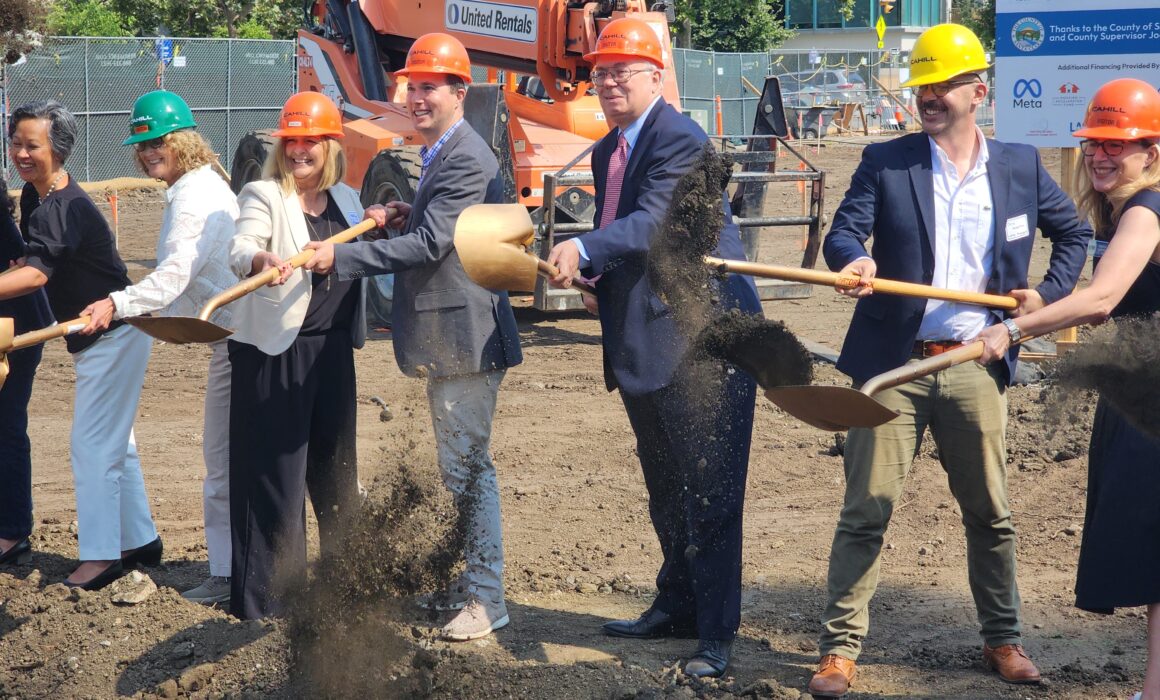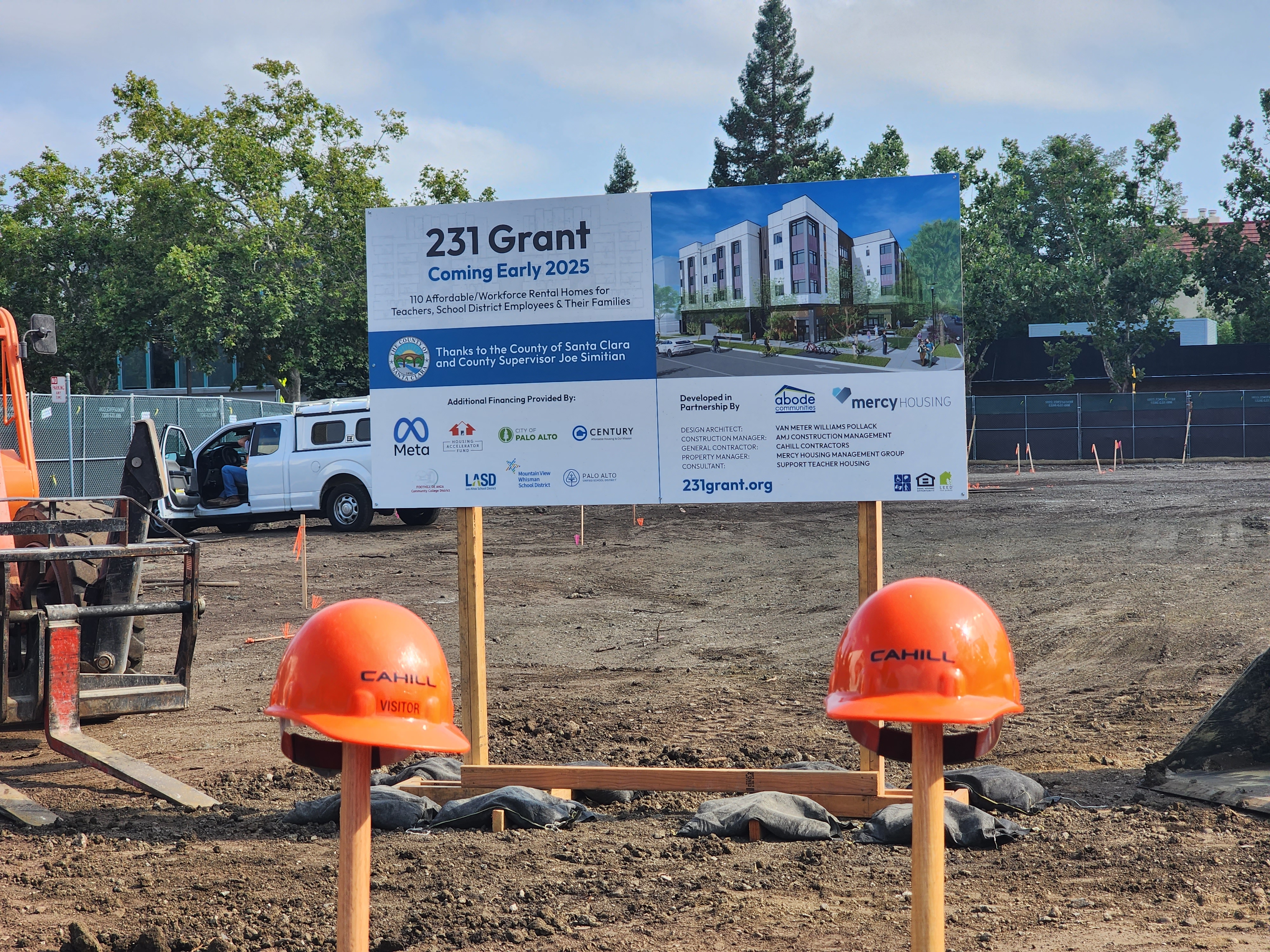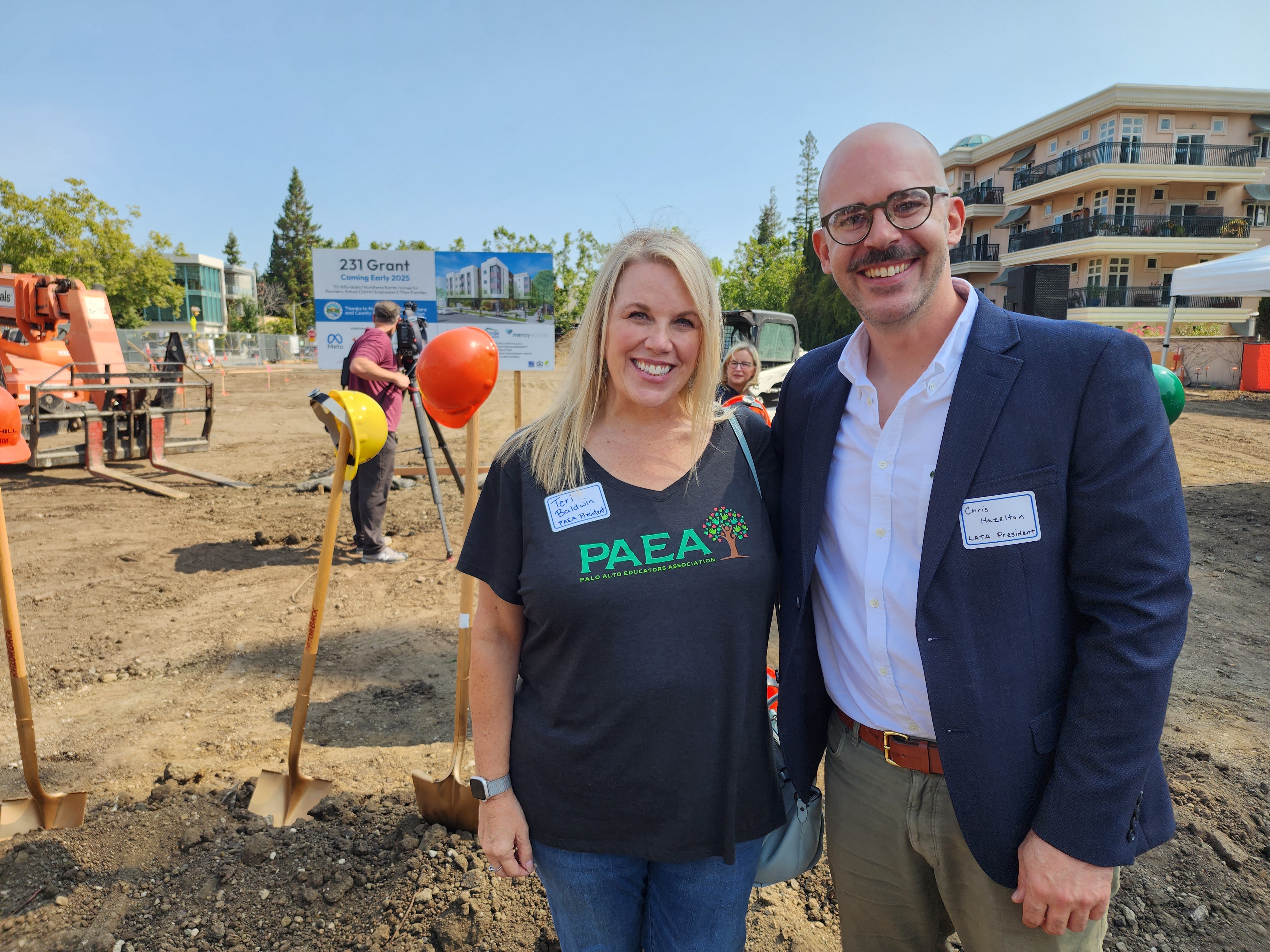
As educators across the state grapple with the ability to afford to live where they work, a public-private partnership in Palo Alto broke ground in August on a housing development that will bring 110 new units set aside for teachers and education support professionals in the expensive San Francisco Bay Area.

Breaking ground at 231 Grant.
The housing project, called 231 Grant, was made possible through an innovative partnership that saw Santa Clara County contribute $37 million, social media giant Meta give a $25 million grant, and the San Francisco Housing Accelerator Fund provide a $24.7 million permanent loan. Four school districts — Palo Alto Unified, Los Altos, Mountain View Whisman and Foothill-De Anza Community College District — contributed a total of $3.25 million to the development. Educators and ESPs in these districts will be eligible to apply for an apartment when the project is completed in mid- to late-2025.
“By making their lives easier, a teacher is able to focus more time and energy on their students, not on worrying about housing, working a second job or their commute.”
—Los Altos Teachers Association President Chris Hazelton

Palo Alto Education Association President Teri Baldwin and Los Altos Teachers Association President Chris Hazelton.
“These 110 units will ultimately serve thousands of educators and these educators will serve tens of thousands of students,” said Joe Simitian, the Santa Clara County Supervisor who championed the development. “We know that when classified staff and teachers are residents of the places where they work, we are all beneficiaries.” Simitian first proposed educator housing in 2018 in response to an environment where teachers were commuting three to four hours round-trip because wages were not keeping pace with rising housing costs. The son of a teacher who bought his childhood home in Palo Alto on a single educator’s salary, Simitian knew something needed to happen to provide present day educators some relief. The result is 110 affordable studio, one- and two-bedroom rental homes with amenities including gardens, a children’s play area and bicycle parking.
Palo Alto Education Association President Teri Baldwin and Los Altos Teachers Association President Chris Hazelton were both seated in the front row at the groundbreaking ceremony, beaming with excitement about the project moving forward.
“By making this investment in housing for educators, our community is showing how valuable these essential workers are,” Hazelton said. “It is often said that teaching is an art. If you ask a teacher, they might say it’s the art of balancing time and energy. By making their lives easier, a teacher is able to focus more time and energy on their students, not on worrying about housing, working a second job or their commute.”
A specific number of units are set aside for educators from each of the school districts, which contributed $50,000 for each unit to secure priority access for their workers. To qualify for residency, applicants must be employed by one of the school districts or approved schools and meet income requirements. Rent will be set based on household income and size of the unit — and should not exceed 30 percent of a household’s income.
“By allowing educators to pay rent that corresponds to their income, we show them meaningful support as they start their professional lives, and we demonstrate their importance in our community,” Hazelton said. “I look forward to seeing more projects like this in our community.”
There have been a series of bills signed into law over the past seven years aimed at alleviating the teacher housing crunch, the most recent of which signed by the governor last year allows staff housing to be built on any property owned by a school district without requiring the district to request zoning changes from city or county officials. A 2022 report on education workforce housing in California (located at California School Board Association (CSBA) stated that 46 school districts and other educational agencies were pursuing projects at 83 sites, though only four had been completed at the time of publication.



The Discussion 0 comments Post a Comment